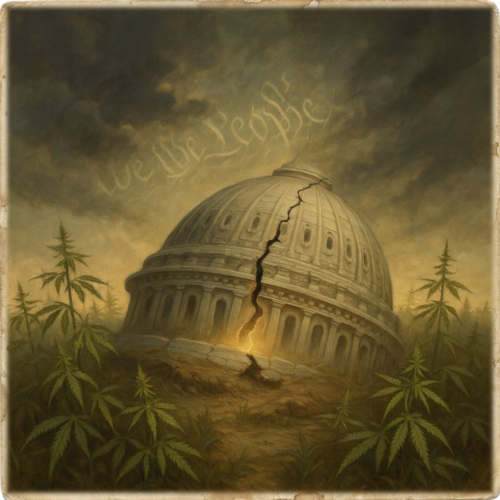Oklahoma’s new law increases penalties for illegal marijuana cultivation and distribution, giving law enforcement more tools to crack down on illicit medical marijuana operators.
Oklahoma has been at the forefront of the United States’ cannabis industry since the legalization of medical marijuana in 2018. The industry has since experienced a boom, with thousands of businesses obtaining licenses to grow, sell, and distribute cannabis products across the state.
However, with the growth of the industry has come an increase in illegal activity, with unlicensed businesses operating outside of the state’s legal framework. In response to this, a new law has been passed, targeting illicit medical marijuana operators and aiming to increase the safety of medical marijuana patients.
The new law, signed by Governor Kevin Stitt, introduces a range of measures designed to tackle illegal marijuana cultivation and distribution. This includes higher penalties for those who engage in illegal activity, as well as the ability for law enforcement to seize assets and issue restraining orders.
One of the primary motivations for the new law is to ensure that patients have access to safe and regulated marijuana products. Proponents of the legislation argue that licensed businesses are held to a higher standard, with regulations in place to ensure that their products meet certain safety and quality standards.
By cracking down on unlicensed businesses, the law aims to level the playing field for licensed businesses, allowing them to compete fairly and providing consumers with access to high-quality, safe products. Furthermore, it is hoped that the law will also help to reduce the incidence of black market activity, which can be dangerous for consumers and negatively impact the industry as a whole.
Despite these positive intentions, however, there are some concerns that the new law could have unintended consequences. For example, some critics argue that the increased penalties may drive more people into the illicit market, as they may be less willing to risk prosecution for engaging in illegal activity.
Additionally, some have raised concerns about the potential impact of the law on marginalized communities. In particular, some worry that the law could be used to disproportionately target certain groups, such as people of color, who have historically been disproportionately impacted by drug-related prosecutions and incarceration.
It remains to be seen how effective the new law will be in achieving its intended goals. However, it is clear that the Oklahoma government is taking the issue seriously and is committed to ensuring that patients have access to safe and regulated medical marijuana products.
There is also a broader debate taking place about the role of cannabis in the United States, with many arguing that it should be fully legalized for both medicinal and recreational use. While some states have already taken steps in this direction, there is still a long way to go before cannabis is fully legalized across the country.
In the meantime, however, it is likely that we will continue to see a range of state-level laws and regulations designed to balance the competing interests of public safety, consumer access, and economic growth in the cannabis industry. The new law in Oklahoma is just one example of this ongoing debate and highlights the complex nature of the issues at play.


